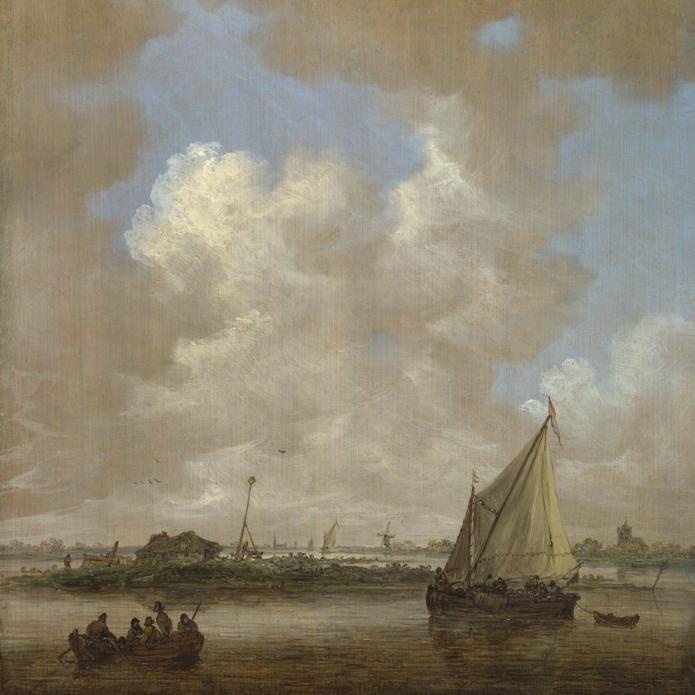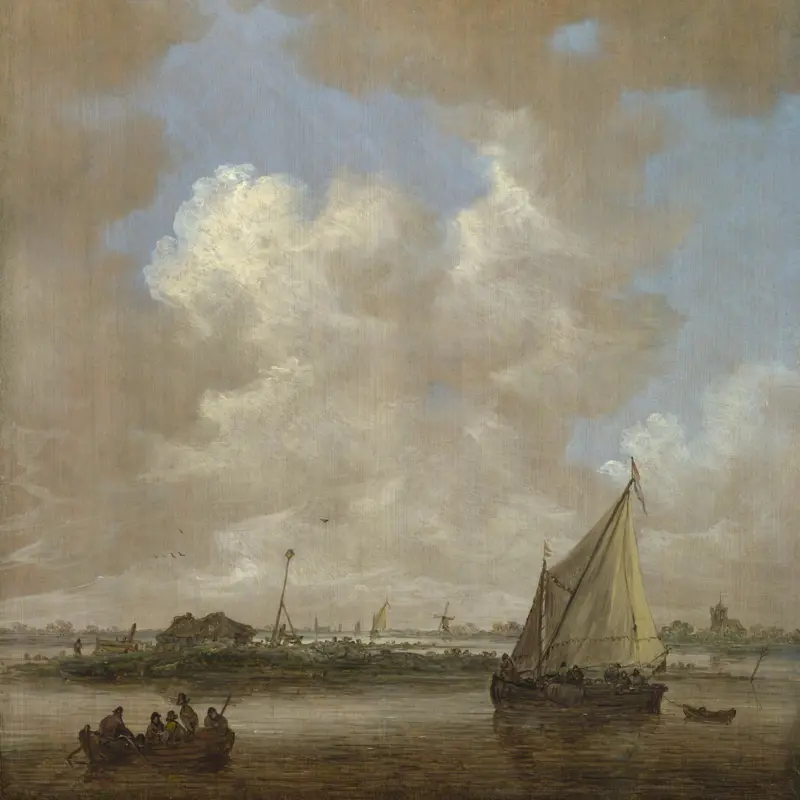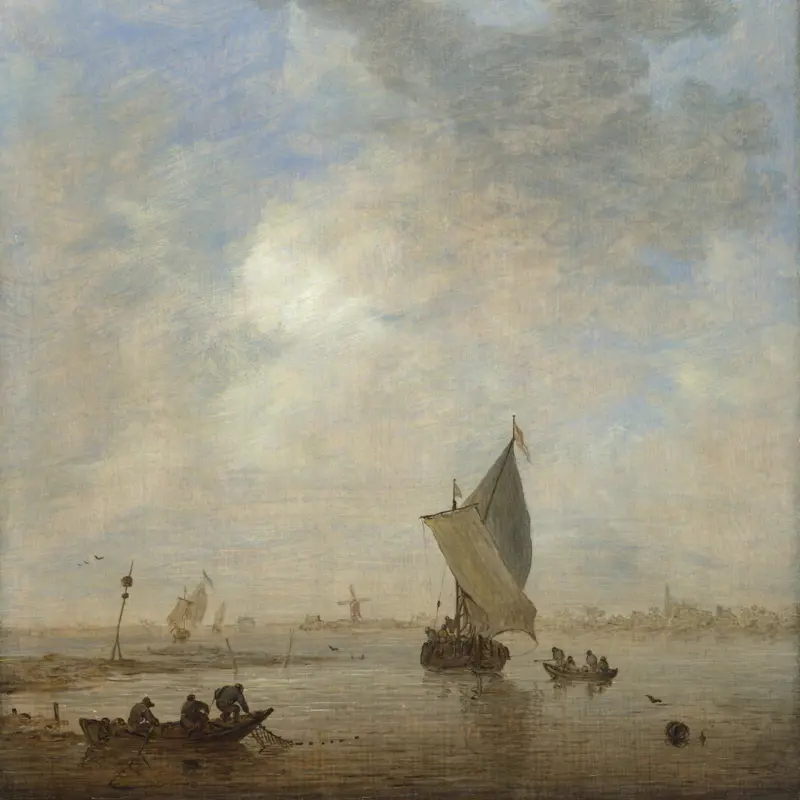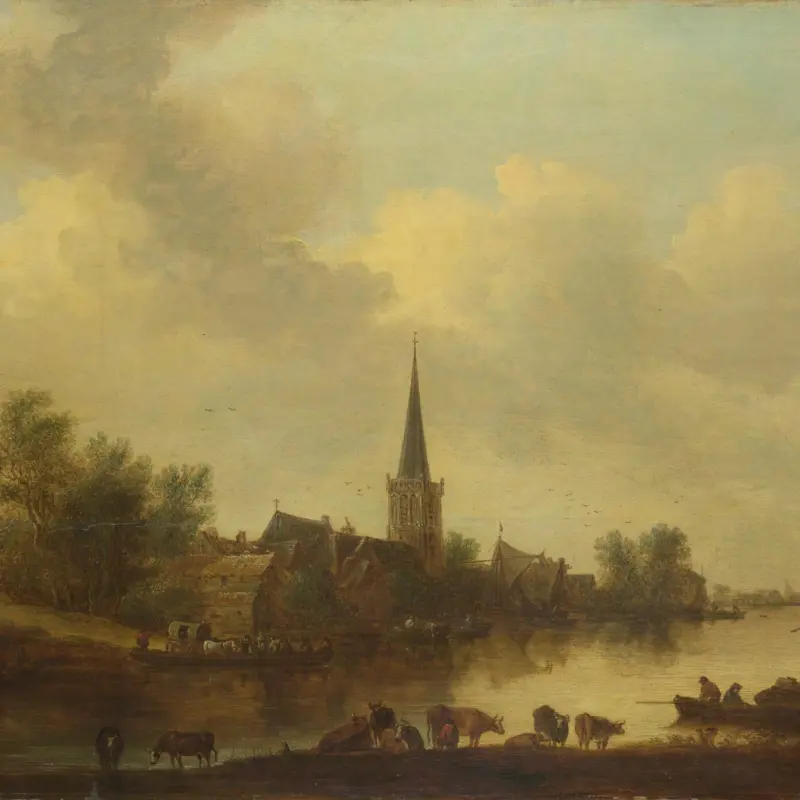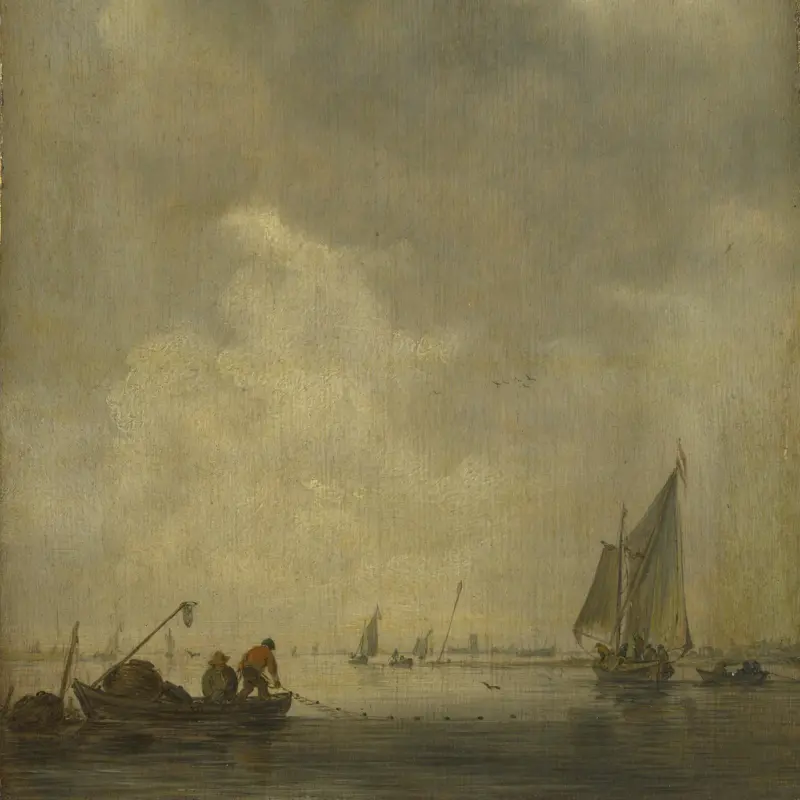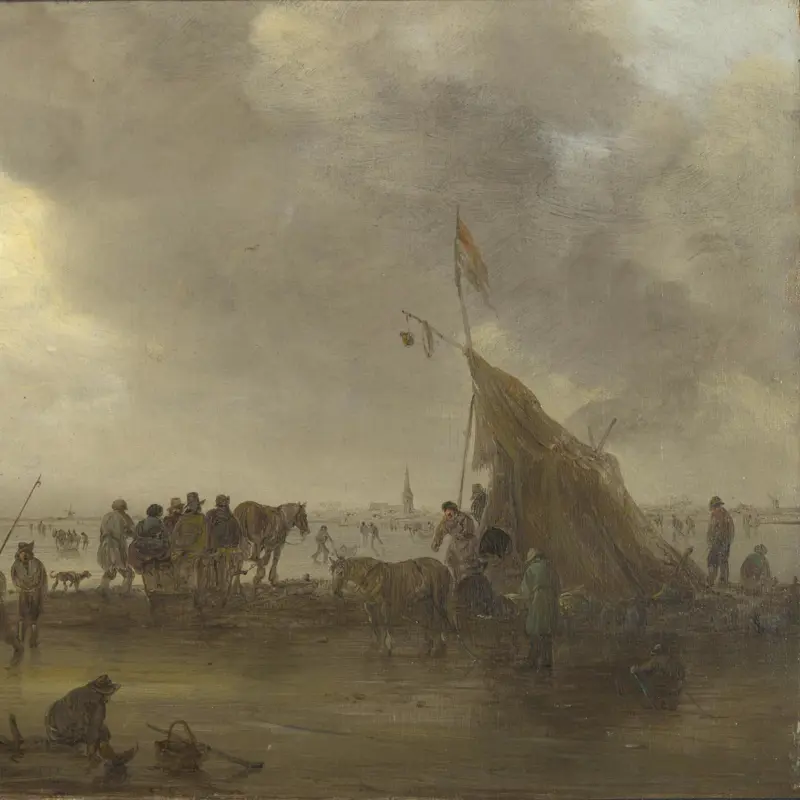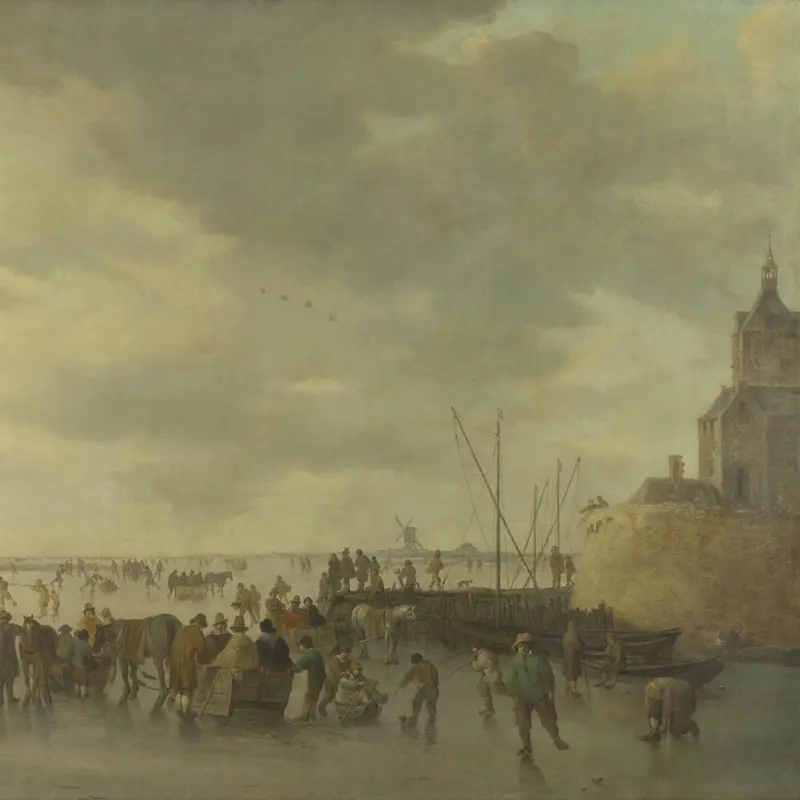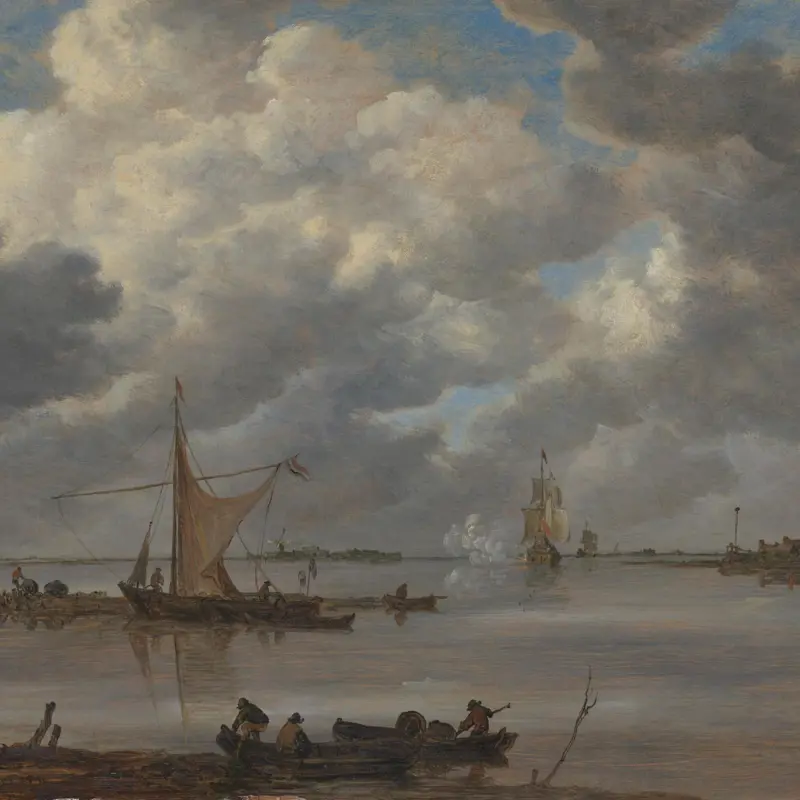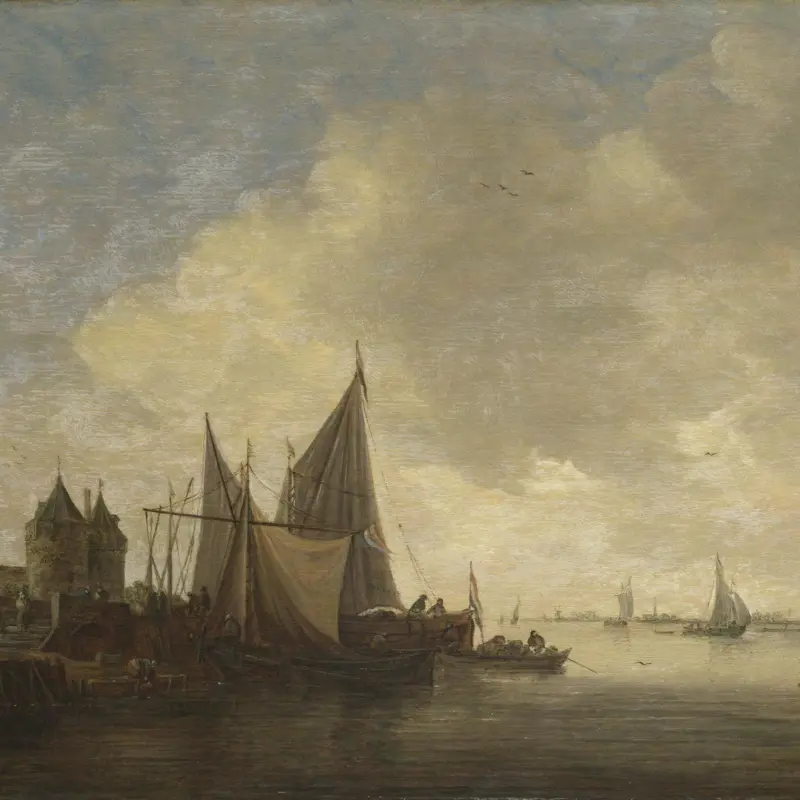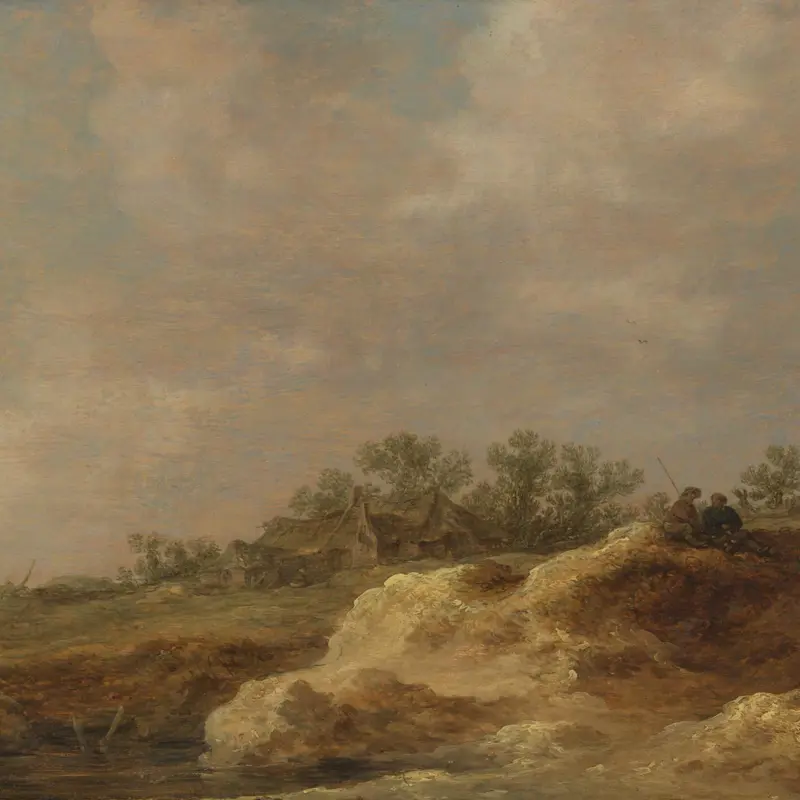Jan van Goyen, 'Fishermen hauling a Net', 1640-5
About the work
Overview
This painting is a companion piece to A River Scene, with a Hut on an Island (also in the National Gallery’s collection), which is exactly the same size and depicts a similar horizon and arrangement of boats, but, as the title suggests, includes an island in the middle ground.
The two are similar, but there are many subtle differences between them. The other painting depicts a scene at high water, whereas here it is clearly at or near low tide. The mudflats, still glistening wet, are exposed; the withies – slender stems of willow which have been put in place to mark the position of the mudbank when it is covered by the tide – are temporarily redundant. And while the light in the companion painting is clear and relatively bright, there is a flatter greyness to this scene. The short, sideways brush marks in the sky suggest drizzle is in the air.
Key facts
Details
- Full title
- Fishermen hauling a Net
- Artist
- Jan van Goyen
- Artist dates
- 1596 - 1656
- Part of the series
- Two River Scenes
- Date made
- 1640-5
- Medium and support
- Oil on wood (probably oak)
- Dimensions
- 37 × 33 cm
- Inscription summary
- Signed
- Acquisition credit
- Bequeathed by Mrs Elizabeth Carstairs, 1952
- Inventory number
- NG6155
- Location
- Not on display
- Collection
- Main Collection
Provenance
Additional information
Text extracted from the ‘Provenance’ section of the catalogue entry in Neil MacLaren, revised and expanded by Christopher Brown, ‘National Gallery Catalogues: The Dutch School: 1600–1900’, London 1991; for further information, see the full catalogue entry.
Bibliography
-
1955The National Gallery, The National Gallery: 1938-1954, London 1955
-
1960Maclaren, Neil, National Gallery Catalogues: The Dutch School, 2 vols, London 1960
-
1991Maclaren, Neil, revised by Christopher Brown, National Gallery Catalogues: The Dutch School, 1600-1900, 2nd edn (revised and expanded), 2 vols, London 1991
-
2001
C. Baker and T. Henry, The National Gallery: Complete Illustrated Catalogue, London 2001
About this record
If you know more about this work or have spotted an error, please contact us. Please note that exhibition histories are listed from 2009 onwards. Bibliographies may not be complete; more comprehensive information is available in the National Gallery Library.
Images
About the series: Two River Scenes
Overview
Both of these pictures are of identical size and seem to have been made to hang side by side. With a pair of paintings, Jan van Goyen could engage viewers in a more complex way than he could with a single picture. There are some striking similarities between the two: the low horizons, the islands or mudflats in the middle ground, the distant buildings, the angle of the navigation markers, the three boats in similar positions. But there are also subtle differences. The two distant churches may be at a similar point on the horizon, but one has a tower and the other a spire. One navigation marker has two balls at the top, the other just one.
Only by careful attention can we decide whether van Goyen has painted two different scenes or the same view at a different state of the tide. Perhaps he was suggesting that, in both landscapes and paintings, the more we look, the more we see.

